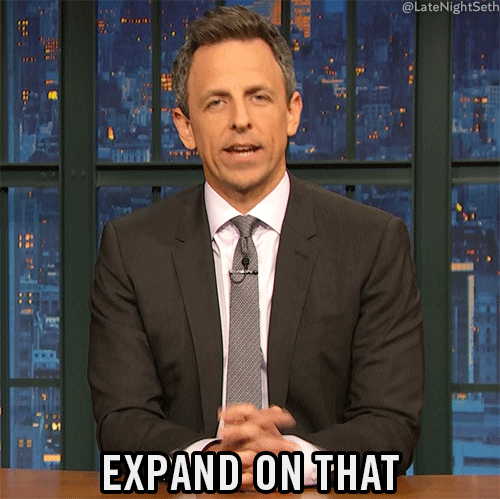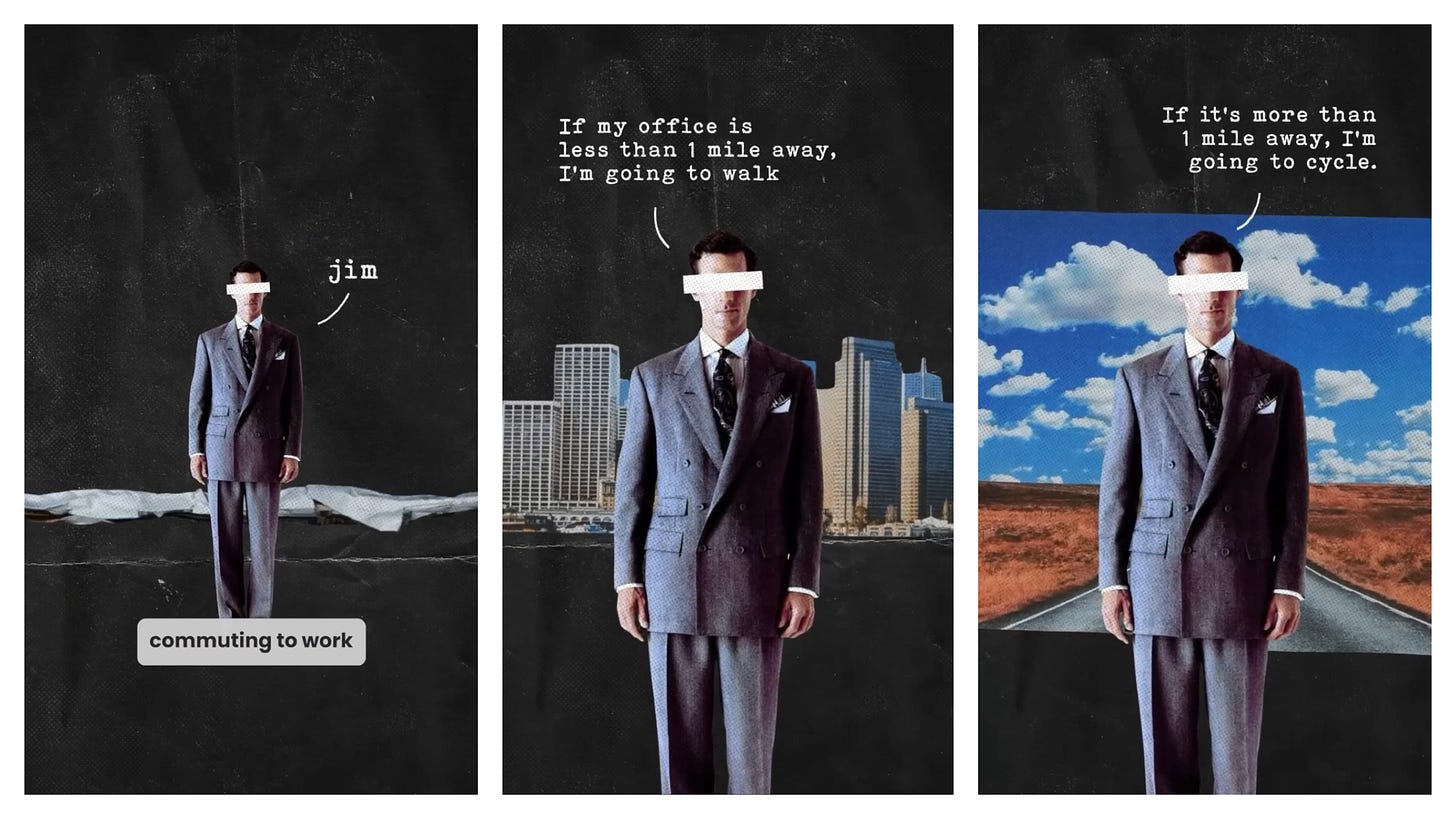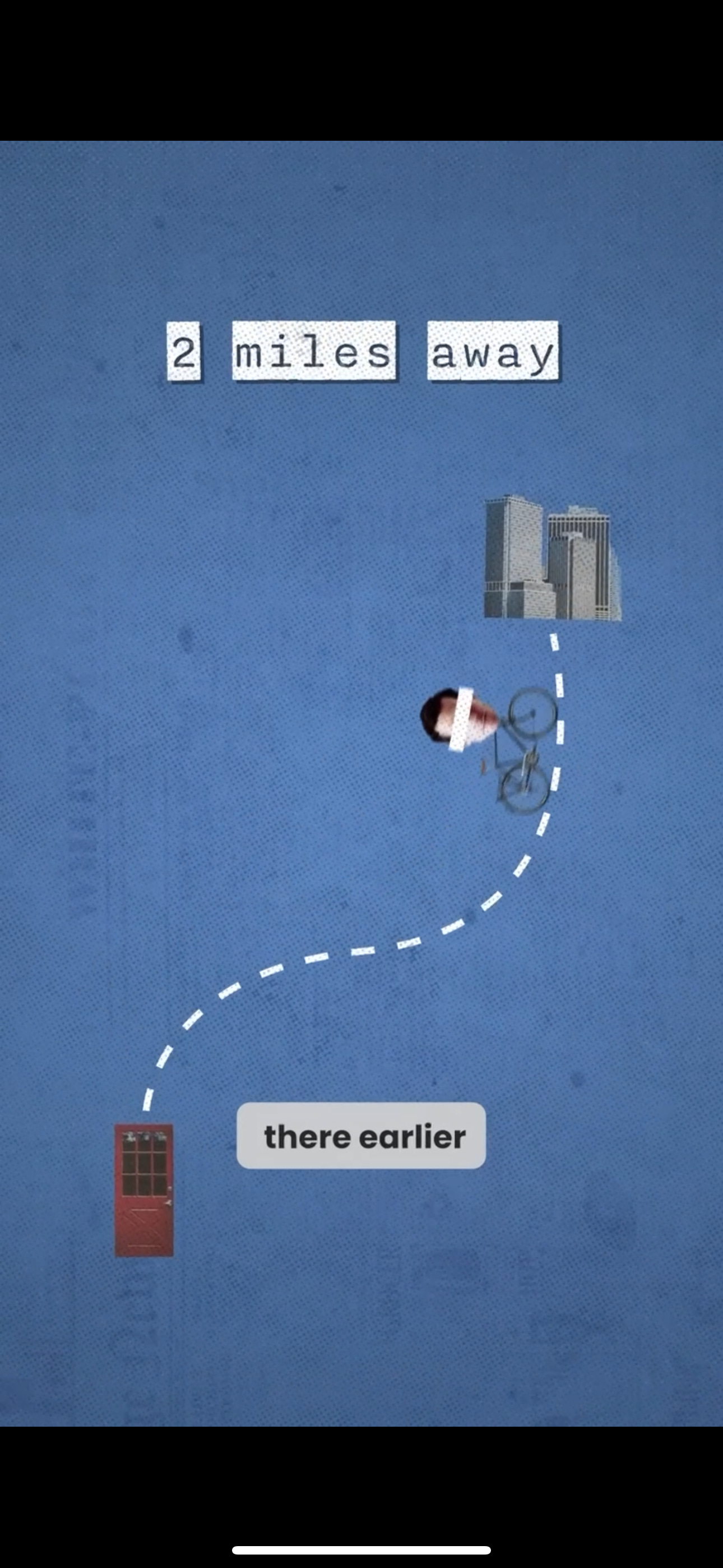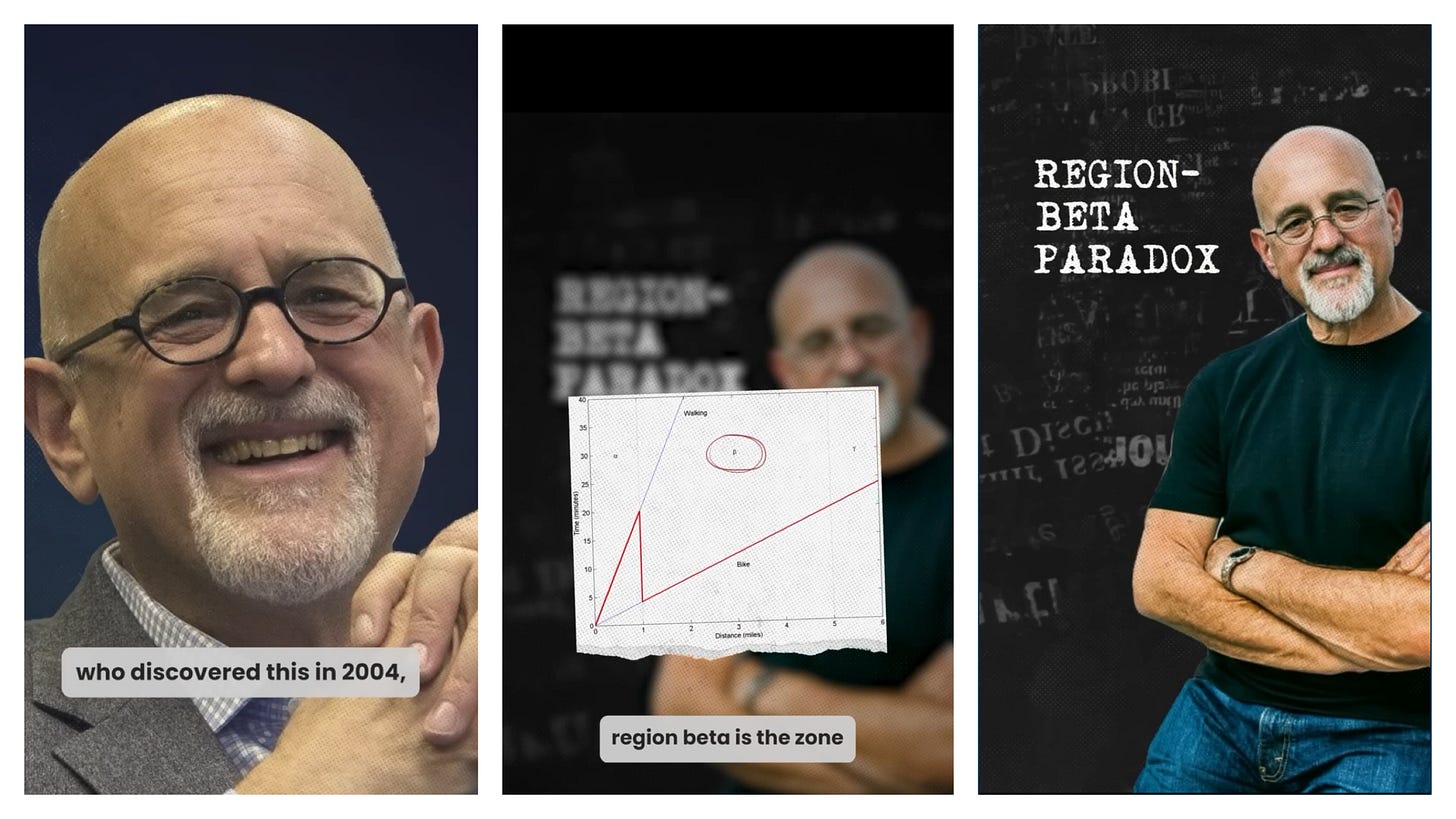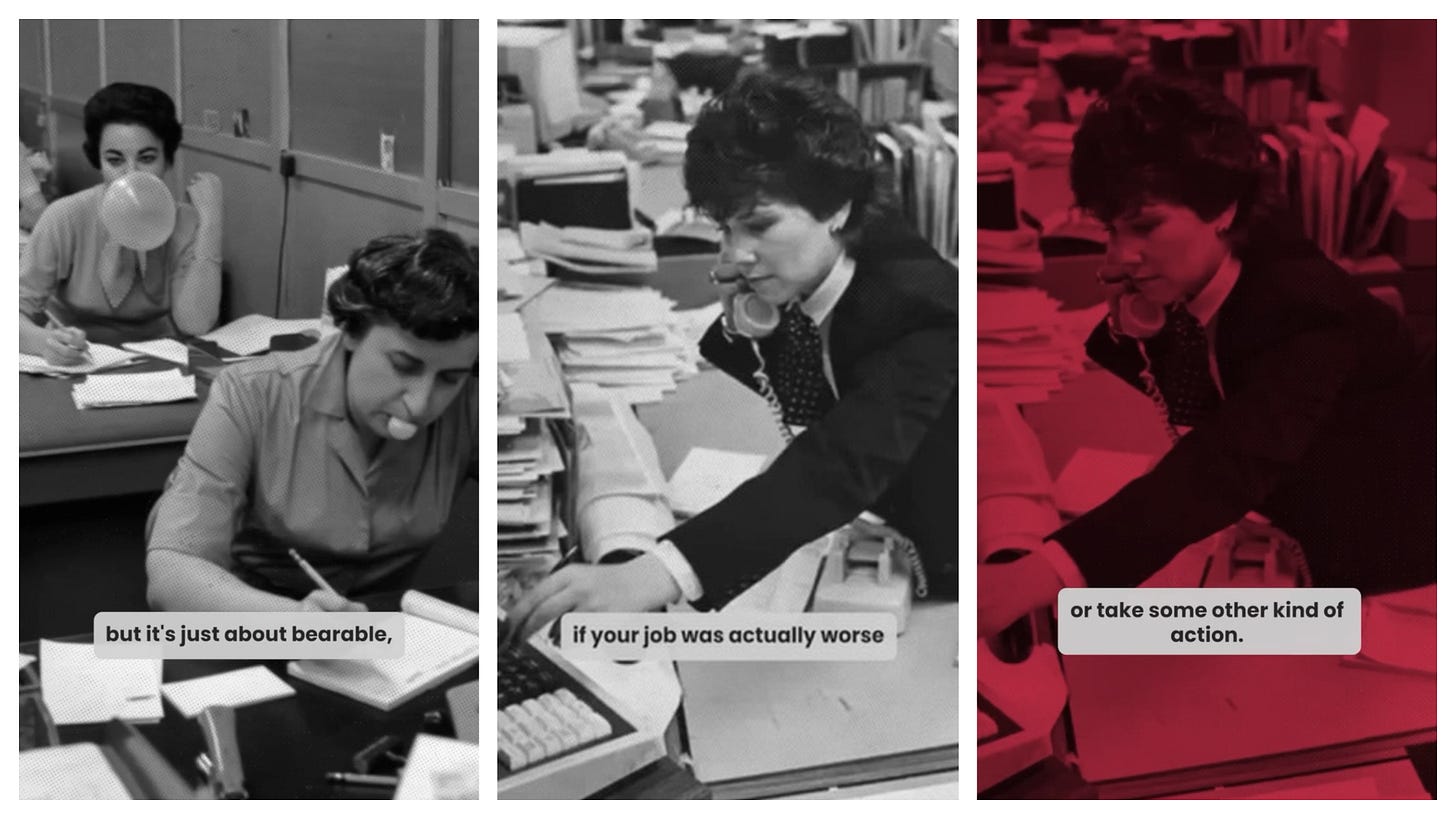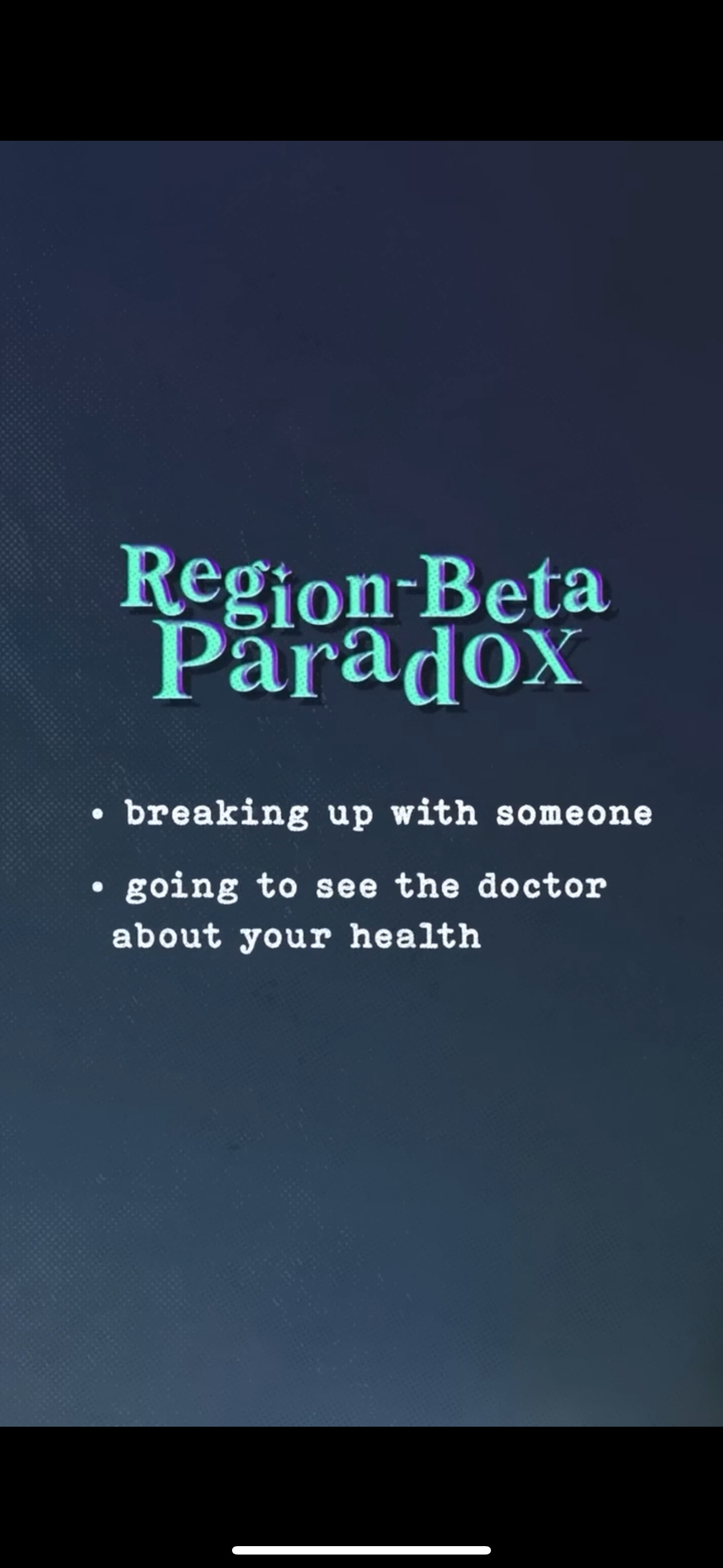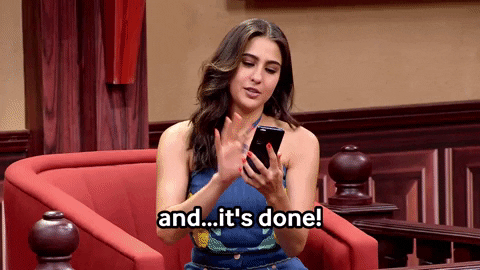maybe you need a harder kick in the butt 🥾💥🍑
Ali Abdaal explains a life-changing paradox via YouTube shorts
YT short of the week #005
👋 Hello friend,
“The Beta Region Paradox” is a brain-numbing mouthful of too-long-didn't-read-LOL kinda concept.
But, trust me, this is worth your time. Pinkie promise.
Today's feature is former doctor Ali Abdaal. The man has a kilometric laundry list of accolades, but I'll leave you with 2:
he explained to me “the Beta Region Paradox” with a YT short
and he can type 155 words per minute.
Impressive stuff.
Watch this, and I'll meet you right after.
1.7M views / 137K likes / 1K comments
Welcome back. Now let's break it down:
Story Beat 1: have you heard of this?
"Have you ever heard of the region beta Paradox?"
This hook is a question, and questions engage because they’re a challenge in disguise.
Curiosity loop 1: what is the region beta paradox?
Story Beat 2: you could be one of them
"You might be suffering from it right now."
Why it works:
This is such a deadly 1-2 combo:
“Here is a complex-sounding topic and, by the way, this might affect you directly”An explosive growth of stakes.
For Ali: if this ominous tease falls flat, the viewer will never trust him again.
For the viewer: what am I suffering from? what is this?
Dang. Am I dying?
Curiosity loop 2: how much am I suffering from it?
Story Beat 3: Let's imagine Jim
"Let's imagine a person called Jim commuting to work.
Jim decides that if his office is less than one mile away he's going to walk to work and if it's more than one mile away he's gonna cycle."
Why it works:
By introducing Jim and the relatable scenario of commuting to work the script illustrates the paradox with a story.
This makes an abstract concept easier to digest.
We've all commuted or biked in the past.
Story Beat 4: Underline the paradox
"Now the Paradox is that if Jim's office is two miles away and if he cycles he'll actually arrive there earlier than if he walked."
Why it works:
The nut of it. The answer to “What is the beta region Paradox".
However, the viewer is still unclear how is this relevant. So we go deeper into the story.
Story Beat 5: connect the paradox to Jim
so there's this weird situation going on where something that's actually technically worse for him like his office being further away actually turns out to be better because it forces him to cycle and therefore takes him less time to get there
Why it works:
The explanation of the paradox provides the "aha" moment, revealing the counterintuitive outcome of Jim's scenario.
Story Beat 6: support the paradox with data
the psychologist who discovered this in 2004, Daniel Gilbert called this the Region beta Paradox because on this graph region beta is the Zone where worse situations actually end up being better for you
Why it works:
Knowing the source is interesting, but also validates the concept.
Here the audience is already invested, and they're more likely to stick around to know more details about challenging ideas.
Story Beat 7: cool story, bro. But why should I care?
and this relates to many other areas of life as well
for example if you don't like your job but it's just about bearable it could be better for you if your job was actually worse and you were forced to quit or take some other kind of action
Why it works:
We all are or have been Jim at some point.
The application to broader life situations closes the main curiosity loop (“are you suffering from it?")
Story Beat 8: pack it up in one sentence.
"So this is the region beta Paradox that sometimes in life things need to get bad enough before you're forced to take action."
Why it works:
Pack it up nicely in a takeaway box with their name written in a heart.
Story Beat 9: call to action, back to the original question
"Do you think you're in one of these situations?"
Why it works:
You start with a question, end with a question.It's all about the right questions.
This was not a pontificating “you should be doing this, bro”.
It’s more like a “hey, have you thought about this?”
A little reminder that this is important to think about, and that this short was worthy of the viewer's time.
“The Paradox” story recipe for printing 🖨️:
1: have you heard of…?.
2: you could be one of them
3: let's imagine Jim
4: underline the paradox
5: connect the paradox to Jim
6: support the paradox with data
7: cool story, but what should i care?
8: pack it up in one sentence
9: CTA + back to original question
Implementation:
Take a complex concept you'd like to share.
Start by opening two loops: one to explain the concept and another to make the information relevant to the viewer.
Solve the first loop by sharing a story that illustrates the concept.
For the second loop, provide concrete examples that allow the viewer to close the loop on their own.
Get yourself a cookie for being helpful.
And go thank Ali for putting together this tiny masterclass on self-improvement content.
Way to go, Ali.
That's my time for today, ma’ams and sirs.
So glad you're here.
Consider sharing with a friend if you get any value from this breakdown.
See you next week
PS: I've made my first long form!
Matias Ruiz-Tagle
Founder of Atomic Stories




